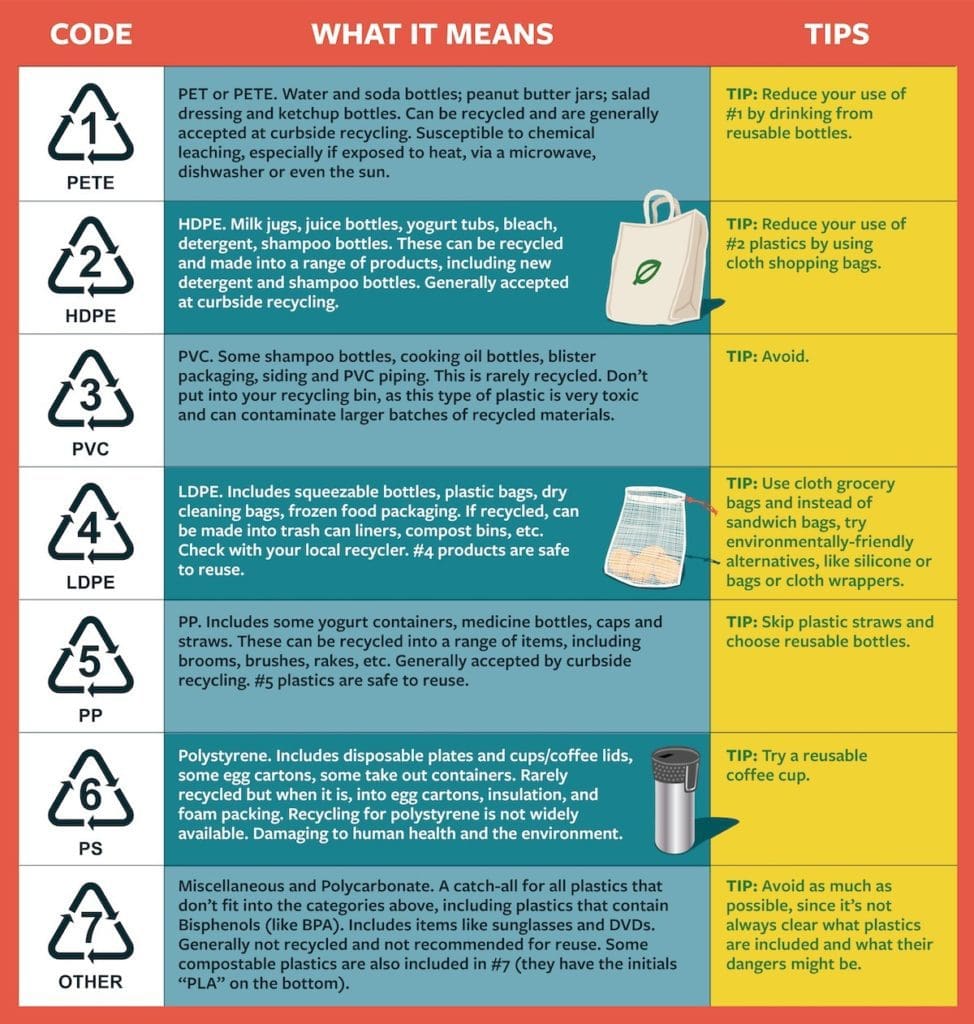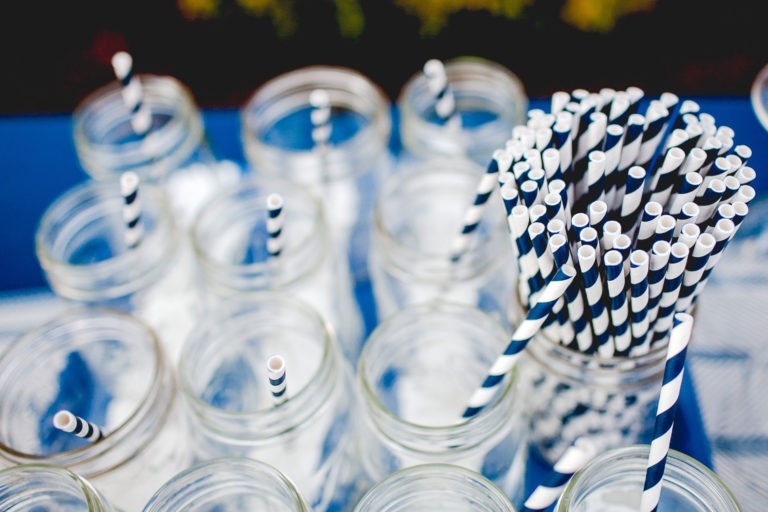Recycling 101: Figuring Out What to Recycle and How
You want to recycle more and recycle better — but, if you’re like most people, you have questions about what to recycle and how. We’re here to help you with that mighty and important commitment, but our first suggestion: use less. And then reuse items, as much as possible. We have lots of ideas and suggestions for you on how to do this.
Now onto recycling: you’ve finished your jar of peanut butter, you’ve sucked down a case of fizzy water, you’ve chowed down your takeout dinner meal. What do you do with the pliable jar, the aluminum cans and the black plastic container and clear lid?
In short, it’s complicated. For starters, you’ve probably heard we’re having a global recycling crisis, thanks in part to the fact that China, once the chief recycler of most of the world’s trash, ended that one-sided relationship in 2018. A huge driver in their decision to close their doors to the US’ (mostly plastic) trash was our single-stream waste system coupled with our tendency to recycle incorrectly; everything we were sending them was a huge contaminated mess that was extremely difficult to sort.
Just because the recycling process has hit a bump in the road (one we hope will be addressed soon, perhaps by increasing US recycling infrastructure) that doesn’t mean we shouldn’t be recycling like champs, cleaning up our waste streams and making it easier for all recycling facilities to sort and process our trash. Here we break down some easy steps for what to recycle, plus the why and the how.
Recycling Varies From Location to Location
The only way to know for sure what is recycled in your town or city or county is to do your research. There are certain items that are pretty much ubiquitously OK, like PET #1 bottles (water and soda bottles) but many items vary from place to place.
Learn Your Recycling Numbers
Wait, what’s PET (or PETE) #1? Start by learning your numbers. Some plastics are worse than others (for the environment, or for human health or both). And some are easily recycled and some are not. Learn which ones are the worst AND which are recyclable near you. You can only learn what to avoid and what to recycle if you understand what the numbers inside the recycling symbol mean.

Be Realistic
No wishcycling, ok? Don’t just throw everything in the bin and hope for the best. Somewhere between 16% – 25% of what we are putting in the bins is not recyclable. When we do this we contaminate waste streams and junk up recycling machinery
Heads Up on Thorny Items
The items listed below are ones you might be tempted to chuck in the bin, but they are mostly not recyclable — or are unlikely to be recycled. Ones to look out for:
Tetra Paks
Tetra Paks are those soft, shelf-stable boxes that hold broth, soups and plant-based milks. They have lots of layers of different types of materials which makes it hard to recycle them. The Tetra Pak website happily chirps that they are totally recyclable but in reality, this is not the case in most places. You can try to do your research about whether they are recyclable in your city or town, but even that is a bit tricky to figure out. Tip: Opt for a glass bottle or a BPA-free aluminum can instead, if that’s an option.
Styrofoam
Styrofoam is a puffed version of a plastic called polystyrene or Polystyrene #6 (see plastic numbers chart above). The puffed version is not recyclable anywhere and the unpuffed version is not recycled in the majority of systems. Tip: Avoid things that obviously look like Styrofoam, but also anything with a #6, including your plastic coffee cup lid and all of those black plastic takeout containers and their clear plastic lids.
Coffee Cups
Let’s talk about that coffee cup. Did you notice how it didn’t turn into paper mush when your hot coffee was in it? That’s because it’s lined with plastic, rendering it unrecyclable. So that means no rinsing your cup and wishcycling it. It goes in the trash. Tip: Avoid the guilt and get a reusable mug.
Plastic Grocery Bags
These are not recyclable curbside. The bags just clog up the recycling machinery. But you might be able to drop them off somewhere near you — usually in a grocery store — for recycling in a separate system, so do your homework! By the way, this also means you should not gather your recyclables in a plastic grocery bag and then put the whole bag into the bin. Tip: Empty the bag into the bin and then take the bag back inside to use again, ya hear?
Plastic Wrap
The same is true for plastic wrap. That flimsy plastic functions a lot like a thin plastic bag, gumming up recycling machines and causing headaches. You need to throw it in the trash. Tip: Stop using plastic wrap. We have ideas for how to live life without it.
In conclusion: reducing and reusing should be your first priority. And if it’s the case that your town, city or county doesn’t recycle an item you have, check into other recycling possibilities. Many places have local nonprofits or companies that have decided to fill in the recycling gaps on items like plastic bags. It could mean trekking to a far-off location, but definitely worth it, if an option.
Take Action
Inspired to go beyond recycling and reduce your use of single-use plastic? While it might not be possible to eliminate personal use entirely, there are simple swaps you can make — including, in some cases just declaring a polite ”no thanks!”
We invite you to take the pledge and to be a part of a future of food packaging that is better for people and better for the planet.
Top photo by Pavel/Adobe Stock.
More Reading
From goldenseal to reishi, what is the true cost of the wellness industry's obsession with wild foods?
December 2, 2025
The invisible immigrant labor sustaining America’s chicken obsession
October 21, 2025
Can extended producer responsibility programs push food companies to use sustainable packaging?
October 16, 2025
The meat industry smeared the Planetary Health Diet. Now its creators are back with more evidence.
October 10, 2025
300 million male chicks are killed every year. Can in-ovo sexing change that?
September 30, 2025
How to avoid eating microplastics and chemicals in plastic
September 25, 2025
For these cocoa farmers, sustainability and the price of beans are linked
September 17, 2025
Salmon hatcheries: Unsuccessful conservation, insufficient regulation, and poor animal welfare
September 16, 2025
Can recycled soil blends support a more sustainable future?
September 5, 2025
City-owned grocers may be a lifeline for the food insecure — but they're not the only public model
August 14, 2025

